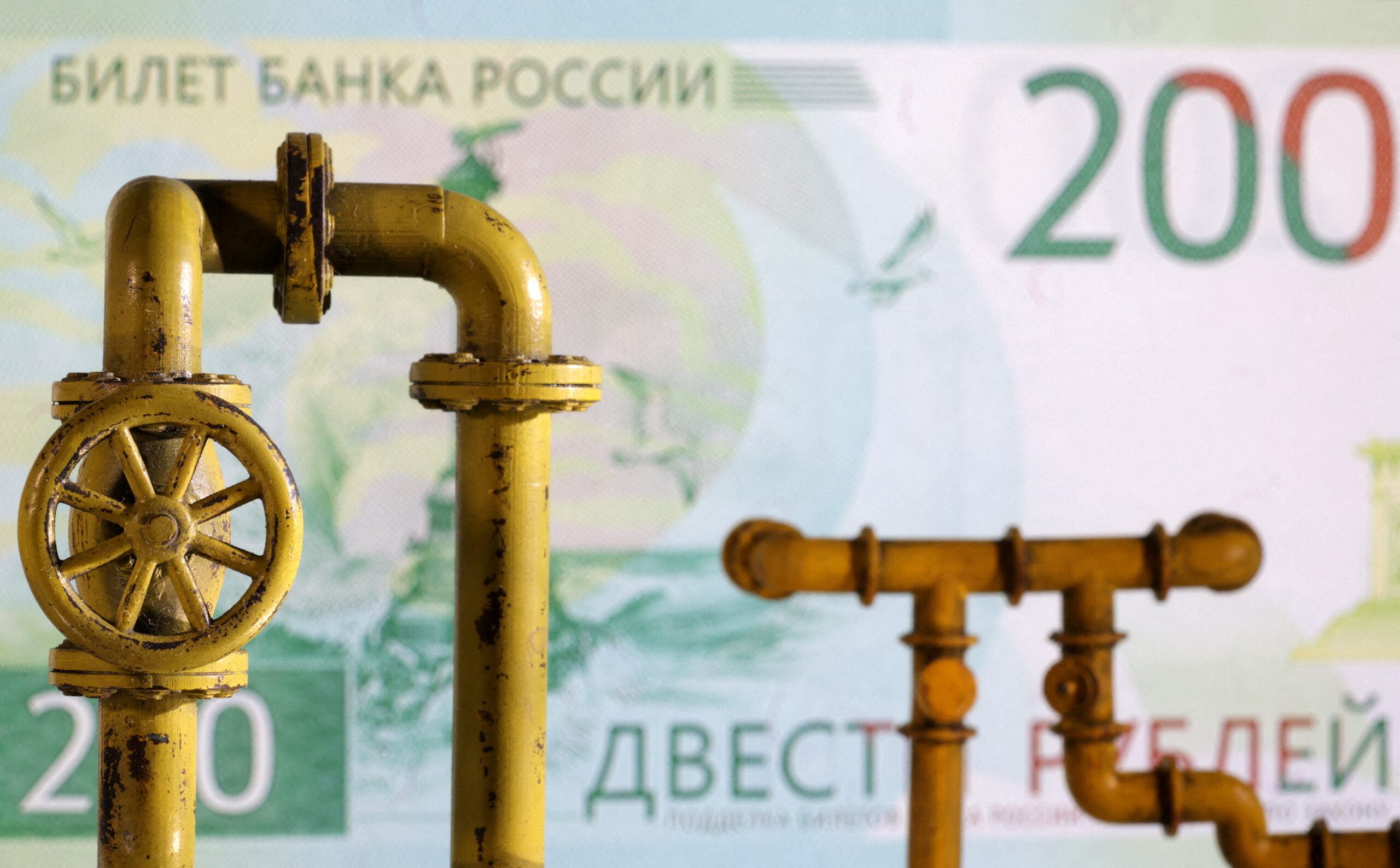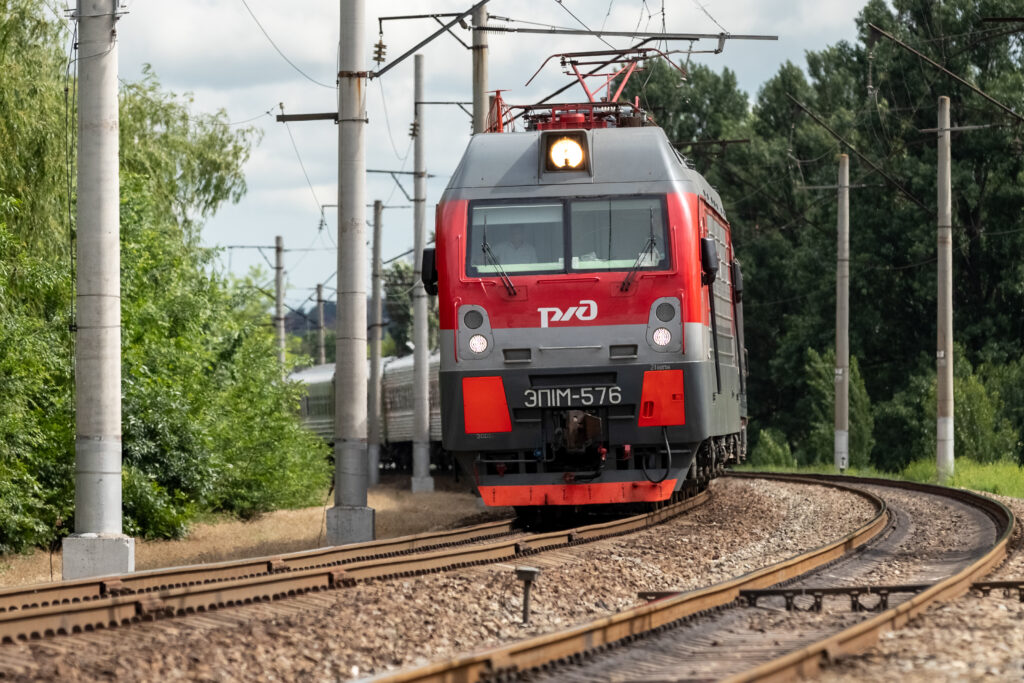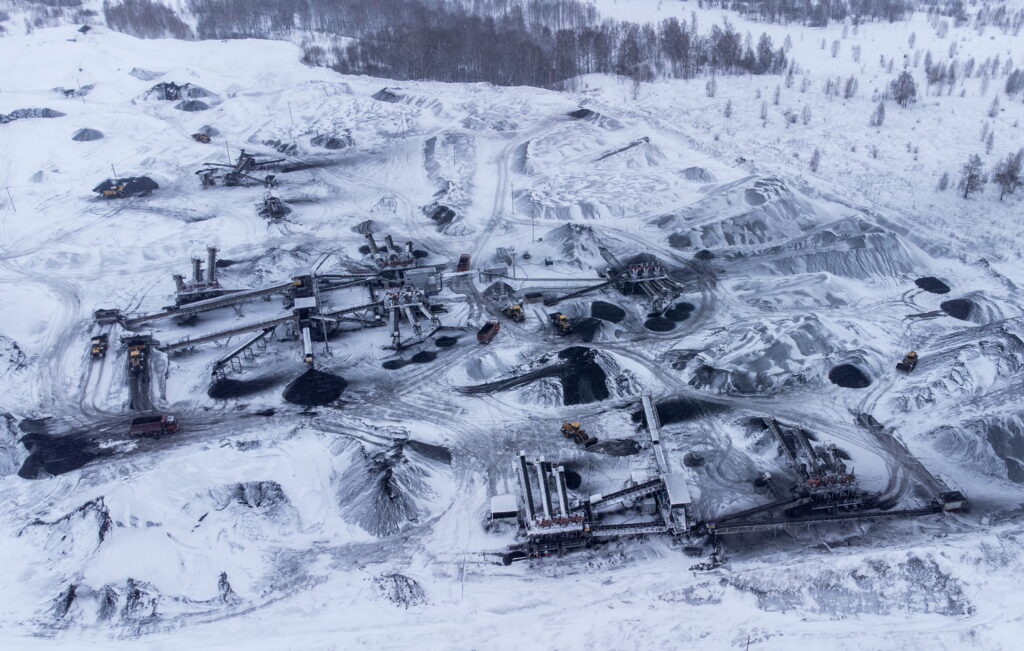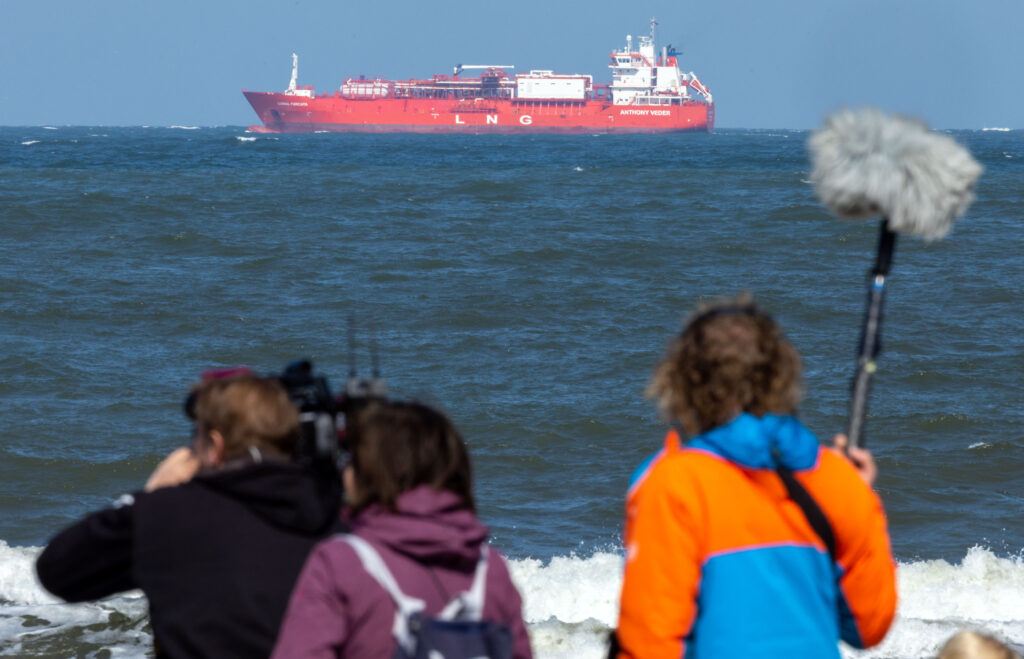On 26 July 2022, the August gas futures on the ICE exchange went up by 21%, setting a record price of EUR 214 per MWh, which, in more usual terms, equals USD 2240 per one thousand cubic metres (for the sake of comparison, the gas price in the US Henry Hub closed at USD 8.975 per 1 MMBTU on the same day, which corresponds to 335 per one thousand cubic metres). One reason behind this price hike was Gazprom’s announcement of another cut in supplies via Nord Stream: this time to 33 million cubic metres per day, or 20% of design capacity of this pipeline. Not surprisingly, later on the same day, representatives of all EU member states initialled an agreement to limit gas consumption by 15% versus the average five-year volume, starting from 1 August. If this result is achieved, European countries will be back to the 1996 consumption levels.
Today, there is no doubt that Europe has awoken in the middle of a ‘perfect storm’: before the pandemic, natural gas prices in the EU and the USA were almost equal, whereas now they are more than 6.5 times apart: in America, natural gas is traded at USD 44 per barrel (in oil equivalent) whereas the European price is almost USD 300/barrel. The latter figure shows how much Europeans are overpaying for natural gas, and they should blame mostly themselves since both Brussels and specific countries (notably Berlin) have worked towards exactly this outcome for several years now.
The history of the ‘gas issue’
There are several striking issues when we assess the history of the ‘gas issue’ in Europe since the second half of the 2000s. Firstly, it was during that period that the British-Dutch spot market model began to spread across the continent, supported by the consumer-oriented European Commission (before that, almost 90% of natural gas contracts were pegged on oil prices and were concluded for a term of over 10 years, often on a take-or-pay basis). In 2008−2009, the Europeans first experienced a price hike proportional to the rise in oil prices and then drastically overpaid for gas to Gazprom when consumption fell by more than 10% in 2009. A switch to spot pricing was virtually assured thereafter (the share of deliveries under this system rose from 30% in 2010 to more than 80% in 2020, at a cost of EUR 30 billion to the EU during 2021). The focus on the new system enabled some authors to say, back in 2010, that Europe would become a ‘natural gas battleground’ between suppliers and consumers. Secondly, the EU, even if realising the scale of its dependence on Gazprom, did not take any decisive steps to reduce it. The Nord Stream pipeline was launched in 2011, Europeans joined Russian LNG projects, and the construction of Nord Stream 2 began in 2018. The head of Gazprom, A. Miller, promised to increase supplies to the EU to 300 billion cubic metres per year, which was welcomed with joy. The share of gas from Russia in EU imports reached an all-time high of 39.4% in 2019. The arrival of liquefied natural gas from the Russian source was seriously perceived in Europe as evidence of diversification of supplies. This policy was probably not so disadvantageous in itself: the problem was that with such dependence, there should have been no ‘outrage’ against the main supplier, but difficulties began already in 2018, when opposition to Nord Stream 2 began to rise sharply. Thirdly, and this looked like a completely inexcusable miscalculation, the Europeans virtually ignored the balancing capacity: while the USA created its Strategic Petroleum Reserve in 1975, intended back then to replace imported oil supplies for 90 days (notably, the Reserve still exists, although, considering the changed circumstances, it already covers almost 1000 days without imports), the European Union entrusted its entire gas policy to national governments, but the directives for market liberalisation were adopted in Brussels. As a result, not only did the European Commission lose its influence on market prices, but it passed underground gas storage facilities over to monopolistic producers (as of mid-2021, Gazprom owned the largest natural gas storage facilities: Rehden in Germany and Haidach in Austria; in Germany, the Russian company controlled a total of 1/3 of total storage capacity, with almost 60% in Austria). In 2022, most of those facilities were either nationalised by the European authorities or handed over to them voluntarily by Gazprom. Even these three points are enough to understand that Gazprom could not resist the temptation to take advantage of these developments, especially in a politically tense time. In fact, however, these were not the only points: let us recall the introduction of shale gas extraction bans in many European countries in 2015−2016 (however unbelievable it may seem now, given Russia’s aggression against Ukraine), although shale gas became the foundation for the American energy revolution. Let us also point out the unacceptable delay in the construction of pipelines from north to south in Central Europe, with outlets to LNG terminals on the Baltic and the Adriatic seas.
Theoretically, the Europeans still had a way out. The EU could keep increasing its gas purchases, certify and launch Nord Stream 2, and produce no response to any irritating factors, knowing that the continent would completely switch to renewable energy sources by 2045 and Moscow would have to sell its hydrocarbons elsewhere. Had Europe not torpedoed Nord Stream 2, had it not imposed sanctions on Russian energy exports and, more generally, had the West not interrupted Gazprom, the current conflict could likely have been avoided. In the first half of 2021, when the pipeline was still under construction, Gazprom’s gas supplies to Europe were 22% higher than during the same period of 2020 (including 15% more to Italy, 19% more to Finland, 35% more to Germany and 4.5 times more to Romania), and almost repeated the 2018 records. Starting in August, Gazprom suspended all deliveries to the spot market, still fulfilling all of its obligations under long-term contracts and hinting at the need to start up the new pipeline as quickly as possible. In Europe, this was perceived as market manipulation and an investigation was launched. From then on, the problem evolved into a purely political issue.
Further developments are commonly known. Gazprom disrupted the filling of European natural gas storage facilities, which resulted in skyrocketing prices. In January 2022, the issue of Nord Stream 2 was put on hold, and then removed from the agenda altogether with the outbreak of Russia’s war against Ukraine. The Europeans adopted a series of sanctions against the Russian oil and gas sector, as well as an embargo on Russian coal imports (effective from Monday) and on oil shipments by sea (effective from December 2022), and began to significantly reduce gas purchases (while Gazprom itself stopped supplies to Finland, Poland and Bulgaria due to disagreements over payment mechanisms after these countries did not agree to Putin’s demand to pay for gas in roubles). As a result of the conflict with Poland, Russia cut off the Yamal-Europe pipeline, supplies through Ukraine were reduced, allegedly because of Naftogaz’s position, and Nord Stream supplies were cut under the pretext of EU and Canadian sanctions on pumping equipment. As a result, natural gas exports from Russia shrank by 33% in the first half of the year, while Gazprom’s production fell by more than 10%. The ‘gas war’ with Europe began.
The bottom line
What might be the outcome of the ‘gas war’? Of course, there is little doubt that the Europeans will emerge victorious from this confrontation in the end. While winter is approaching, the storage capacity, quite unexpectedly, barely reaches two thirds, and abnormally hot weather makes it impossible to save energy ‘here and now’, there are still quite a few options to solve the problem. One solution is to partially resume coal and heating oil generation (since the end of 2021, coal consumption in the EU has been increasing for the first time in many years); another one is simply to become more frugal (in Estonia, demand for natural gas has already decreased by 18% as a result of such actions). Further, of course, natural gas can be purchased from alternative suppliers (volumes have already been contracted from Qatar, the USA, Indonesia and even Azerbaijan) and the huge natural gas field in Groningen, where production was virtually shut down in 2020 due to environmental concerns, may be recommissioned. Obviously, the current situation will severely reduce the rate of economic growth in Europe, but I believe that even if the current anaemic operation of Nord Stream continues, no catastrophe will ensue, natural gas consumption will be reduced in an organised way and the Eurozone economy will not enter a recession. However, the problems will be compounded by a sharp increase in public expenditure: it is now recognised that households alone cannot bear the rising energy costs, and European governments will have to subsidise households with tens of billions of euros (significant sums will also be spent on recapitalisation and/or buyout of energy companies’ securities: so far, the most notable cases have involved Uniper and Electricité de France). In my opinion, the European economy will experience serious problems for another year or two, and the situation will mainly benefit producers of renewable energy (however, we should not forget that while developing this sector, the Europeans are shifting from one needle to another: this sector is critically dependent on rare metals, and 60% of world production of those metals comes from China today (if we add China’s ally Myanma, the figure will grow to or over 70%). China also produces 97% of the global supply of semiconductor wafers, 79% of photovoltaic cells and 67% of polycrystalline silicon, but nevertheless a departure from dependence on Russia will become a fait accompli already in the mid-2020s.
Russia will end up losing more, albeit not immediately. Today, one cannot ignore the fact that natural gas prices in Europe are almost ten times as high as in the early 2021, which means that despite the supply decreases by 30% or even 50%, Gazprom will nevertheless make very serious money (I do not suppose that Russia is prepared to stop selling gas to Europe completely over the next two years). So far, the situation looks good for Russia (the trade surplus in the first half of 2022 hit a record figure of USD 158.7 bn) but almost all European politicians have already said that their confidence in Moscow as a reliable supplier has disappeared. This means Russia will no longer be able to return to what has been its most attractive market for decades. By 2024−2025, Gazprom will fully become a ‘national asset’ and Russia will cease to be an ‘energy superpower’, supplying its hydrocarbons to China, India and Turkey, i.e. countries that will never ‘bend’ towards Moscow the way the Europeans did.
In my view, the current ‘gas war’ became a consequence of irresponsible behaviour on both sides, and it shows how much less cautious today’s politicians are in comparison with their Cold War predecessors. Forty years ago, the USSR and the USA/NATO were in fierce opposition on all continents; their armies were looking at each other through gunsights right at the very heart of Europe, while American weapons were killing Soviet soldiers in Afghanistan. Meanwhile, Europe continued to buy Soviet oil and gas and even actively opposed the American energy policy (this is confirmed by the well-known story of the gas pipe deal of 1970). Moreover, European countries were not so reckless as to succumb to the mercy of Soviet suppliers: in 1984, the share of deliveries from the USSR in the German natural gas balance was lower than imports from the Netherlands. Similarly, the Soviet Union fulfilled all its obligations in terms of supplies for fear of losing customers who provided the majority of its foreign currency earnings. Today, the situation has reversed: first, Europe recklessly increased supplies from Russia while its own production sharply declined, and then the Kremlin lost sight of geopolitical realities, deciding to redraw the borders of the post-Soviet countries. All this put an end to nearly half a century of Soviet/Russian ‘energy romance’, and led to a divorce between the former partners. While this can be assessed in different ways, it remains an undisputable fact.










